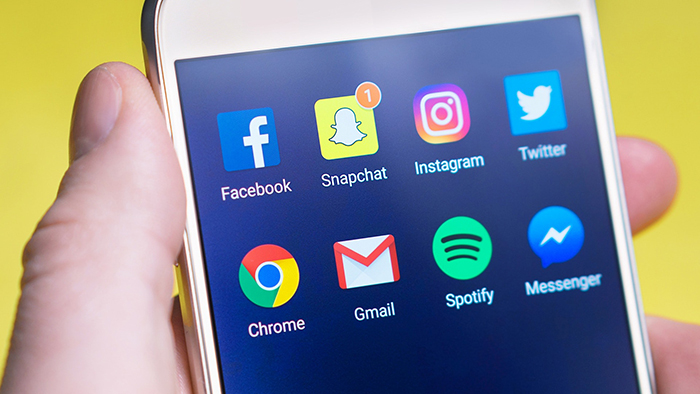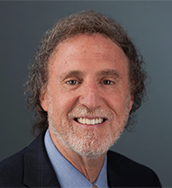Study shows nearly no universities ready to deal with social media crisis

LAWRENCE — Not so long ago, social media was a novel way for professionals in higher education to communicate about their institution. Now it’s ubiquitous, and a generation of students are on campus who have never known life without it. Yet, a University of Kansas study shows nearly no institution is ready to deal with a social media-fueled crisis, even if they have policies in place to do so.
The study surveyed deans at research institutions across the country and found a varying landscape of policies, support and preparedness for social media use, with negative incidents stemming from it as a common occurrence. The growing number of crises and faculty members being targeted via social media shows a need for better policies, but more importantly, ongoing training and professional support in its use, the authors wrote, as well as a need to be savvy with its use to reach today’s students.
 Rick Ginsberg, dean of KU’s School of Education, co-wrote the study that grew out of a presentation he was asked to give to the Council of Academic Deans from Research Education Institutions on social media use in higher education. With co-authors Kathryn Chval of the University of Missouri and Donald Easton-Brooks of the University of Nevada-Reno, he surveyed deans at 100 research institutions. The study, published in the Journal of Higher Education Management, won the Jerome L. Neuner Award for Excellence in Professional Publication from the American Association of University Administrators.
Rick Ginsberg, dean of KU’s School of Education, co-wrote the study that grew out of a presentation he was asked to give to the Council of Academic Deans from Research Education Institutions on social media use in higher education. With co-authors Kathryn Chval of the University of Missouri and Donald Easton-Brooks of the University of Nevada-Reno, he surveyed deans at 100 research institutions. The study, published in the Journal of Higher Education Management, won the Jerome L. Neuner Award for Excellence in Professional Publication from the American Association of University Administrators.
“What I learned is no campus is ready for a social media crisis,” Ginsberg said. “Everybody knows they have to be on social media, but what they don’t know is how to handle the fallout if something bad happens. It’s a great way to get the word out and share good news, but it’s so ubiquitous, and there’s a very blurry line between what works and what doesn’t.”
The survey focused on six areas:
- Whether institutions had social media policies in place
- If their institution had policies to deal with social media crises
- If they had policies or practices for recognizing social media responses to scholarly work in promotion and tenure processes
- If they used social media to promote research
- If they had social media incidents involving students, faculty, research or staff members
- If their institution provided professional development for handling social media incidents
Just over half, 54.4%, of respondents said their institution had a policy to cover social media, and only 35.4% had established procedures to deal with related crises. Knowing that, the majority of respondents fell into two of four categories the researchers created for level of preparedness: no policy or minimal guidance. The other two were expanded guidance and guidance and support. A surprising number of the policies were created to protect the university’s brand and did not consider assisting the university’s employees, Ginsberg said.
More than 80% of respondents said their institution uses social media to promote research, but more than 80% also said it does not factor into promotion and tenure processes or annual performance reviews. Just over 38% said their school has experienced a negative incident due to social media, and 34.4% said their institution offers professional development to equip employees to handle such situations.
The findings show that, while nearly everyone realizes the importance and potential of social media, few in higher education have figured out how to harness its strengths and guard against its weaknesses. The authors recommend strengthening policies, but more importantly, providing ongoing training and professional development for researchers, faculty and staff in its use. While very few institutions recognize social media use and response to faculty sharing and promoting their work through such channels, doing so will only become more important as it becomes more commonplace, the authors write.
“The point is, none of us have completely figured this out yet, but it’s something we all will have to figure out,” Ginsberg said. “No higher education leader should go in naïve. To say you don’t like it or want to deal with it, you do so at your own peril.”
Not only is the potential there for negative headlines, campus unrest fueled by social media and harassment of students and employees, the scholars wrote, but social media savvy is more important than ever. Today’s students have never known a world without it, and in the era of COVID-19 and teaching remotely, using social media as both a teaching tool and way to connect with students is vital, Ginsberg said, adding students also need to learn how to discern between credible and invalid information found online, and higher educators are in a unique position to teach those lessons but must be informed themselves to do so.
“If we’re not on top of social media, how do we connect with this generation of students?” Ginsberg said. “If we’re going to attract students to our institutions, how do we do that if we can’t connect with them?”
Image credit: Pexels.com